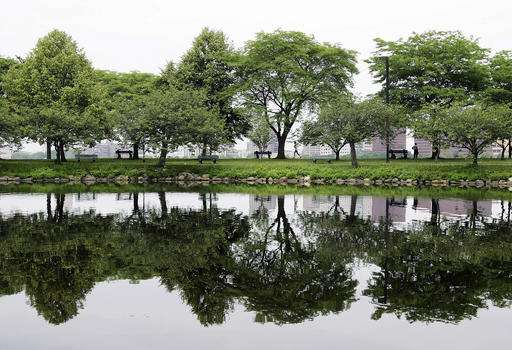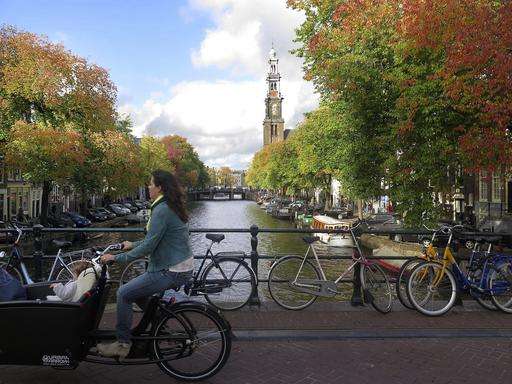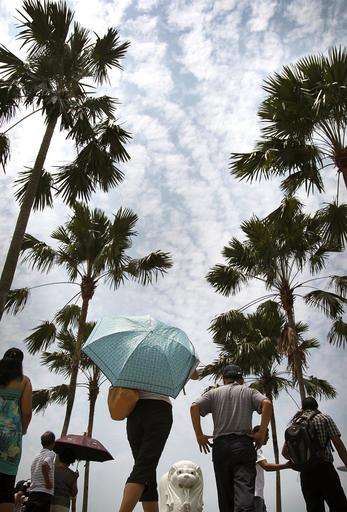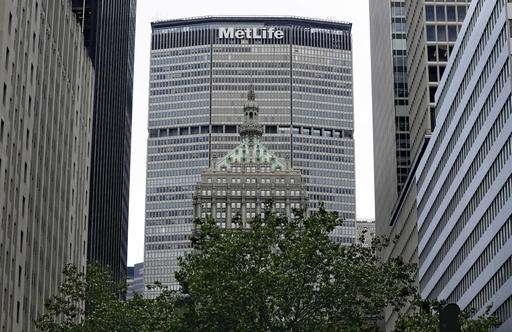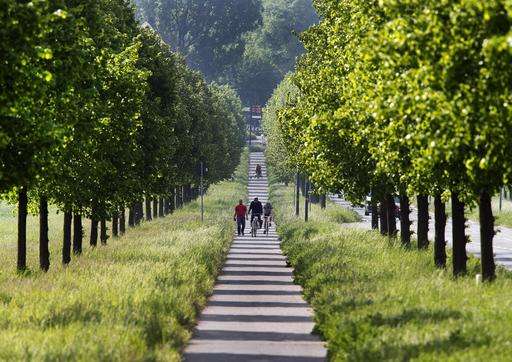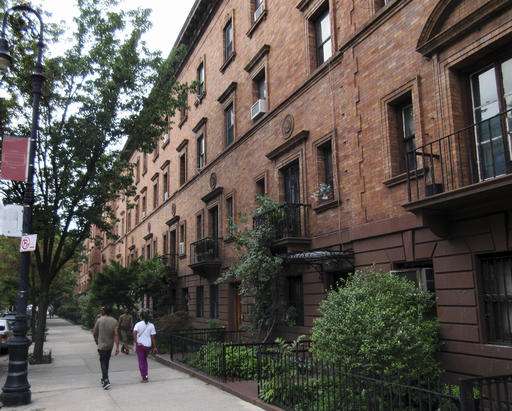In this June 30, 2005, file photo, trees are reflected in still water on the Esplanade along the Charles River in Boston. A Massachusetts Institute of Technology project called Treepedia, that maps trees in the world's major cities, is making it easier to determine where more green is needed. Trees play a critical role in urban environments, helping keep cities cool, mitigating air and noise pollution and just making them more pleasant places to live and work. (AP Photo/Michael Dwyer, File)
Where are the trees? More important, where aren't the trees? A lab at the Massachusetts Institute of Technology is helping some of the world's cities answer both questions in an attempt to make them more pleasant places to live and work.
In an effort to enhance the critical role trees play in urban environments—providing cooling shade, alleviating air and noise pollution, and easing the effects of climate change—the school's Senseable City Lab has developed an online platform that maps out the canopy in some major cities to make it easier for urban planners and ordinary citizens to see where more are needed.
The project, called Treepedia, uses Google Street View to create what the MIT team calls the Green View Index.
Trees block shortwave radiation and increase water evaporation, creating more comfortable microclimates and mitigating air pollution, lab director Carlo Ratti said. But they also just make people feel better, Ratti said, channeling Harvard biologist E.O. Wilson's biophilia theory that humans innately seek out connections with nature.
"We as humans have a natural willingness and desire to be in green spaces," he said.
The interactive website gives bird's-eye views of 15 cities, with trees represented by green dots. Users can zoom into a particular neighborhood or individual street to see ground-level images.
In this Oct. 17, 2014, file photo, a woman rides her bicycle across a bridge over Prinsengracht canal in front of autumnally colored trees in the center of Amsterdam. A Massachusetts Institute of Technology project called Treepedia, that maps trees in the world's major cities, is making it easier to determine where more green is needed. Trees play a critical role in urban environments, helping keep cities cool, mitigating air and noise pollution and just making them more pleasant places to live and work. (AP Photo/Margriet Faber, File)
The City of Lights apparently isn't the city of trees. Of the cities mapped so far, Paris scores lowest with a Green View Index score of 8.8 percent.
North American cities tend to score higher than European cities. Singapore, however, ranks the highest with a 29.3 percent score, slightly ahead of Vancouver, British Columbia.
The other cities mapped so far are Amsterdam; Boston; Frankfurt, Germany; Geneva, Switzerland; London; Los Angeles; New York; Sacramento, California; Seattle; Tel Aviv, Israel; Toronto; and Turin, Italy.
More cities are being added.
In this Aug. 21, 2012, file photo, tourists make pictures under tropical palm trees in Singapore. A Massachusetts Institute of Technology project called Treepedia, that maps trees in the world's major cities, is making it easier to determine where more green is needed. Trees play a critical role in urban environments, helping keep cities cool, mitigating air and noise pollution and just making them more pleasant places to live and work. (AP Photo/Wong Maye-E, File)
"In the future, the goal of this project is to start a conversation so that cities can see how they compare with one another and how they can learn from each other," Ratti said.
He also hopes ordinary citizens will use the website to check out their own homes, and advocate with municipal officials for more trees in their neighborhoods.
The project was inspired by the World Economic Forum's Global Agenda Council on the Future of Cities, which included increasing tree canopy cover on a list of top 10 urban innovations.
"We hope that this endeavor will give citizens a greater appreciation of their city's green canopy and appreciate that the green canopy can assist in responding to climate change," council manager Alice Charles said in a statement.
In this July 12, 2016, file photo, the MetLife Building soars above trees on Park Avenue in New York. A Massachusetts Institute of Technology project called Treepedia, that maps trees in the world's major cities, is making it easier to determine where more green is needed. Trees play a critical role in urban environments, helping keep cities cool, mitigating air and noise pollution and just making them more pleasant places to live and work. (AP Photo/Richard Drew, File)
The project's maps aren't perfect. It appears as if there are no trees in some of the world's most famous parks. New York's Central Park, Boston Common and London's Hyde Park appear as large black swaths of nothing—probably because Google Street View vehicles can't get into those areas.
Ratti hopes to eventually fill those gaps using satellite data, but adds that cataloging street trees is the project's primary goal.
"Streets are important, because that's where we spend most of our time," he said.
-
In this May 11, 2016,file photo, two cyclists pedal through an alley of small trees in Frankfurt, Germany. A Massachusetts Institute of Technology project called Treepedia, that maps trees in the world's major cities, is making it easier to determine where more green is needed. Trees play a critical role in urban environments, helping keep cities cool, mitigating air and noise pollution and just making them more pleasant places to live and work. (AP Photo/Michael Probst, File)
-
In this June 25, 2015 file photo, trees line a quiet streetscape in the St. Nicholas Historic District, also known as Strivers Row, in the Harlem section of New York. A Massachusetts Institute of Technology project called Treepedia, that maps trees in the world's major cities, is making it easier to determine where more green is needed. Trees play a critical role in urban environments, helping keep cities cool, mitigating air and noise pollution and just making them more pleasant places to live and work. (AP Photo/Beth J. Harpaz, File)
© 2017 The Associated Press. All rights reserved.
